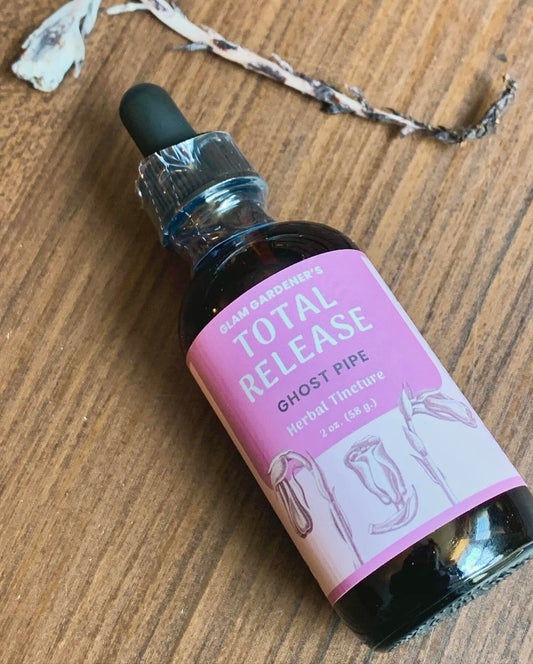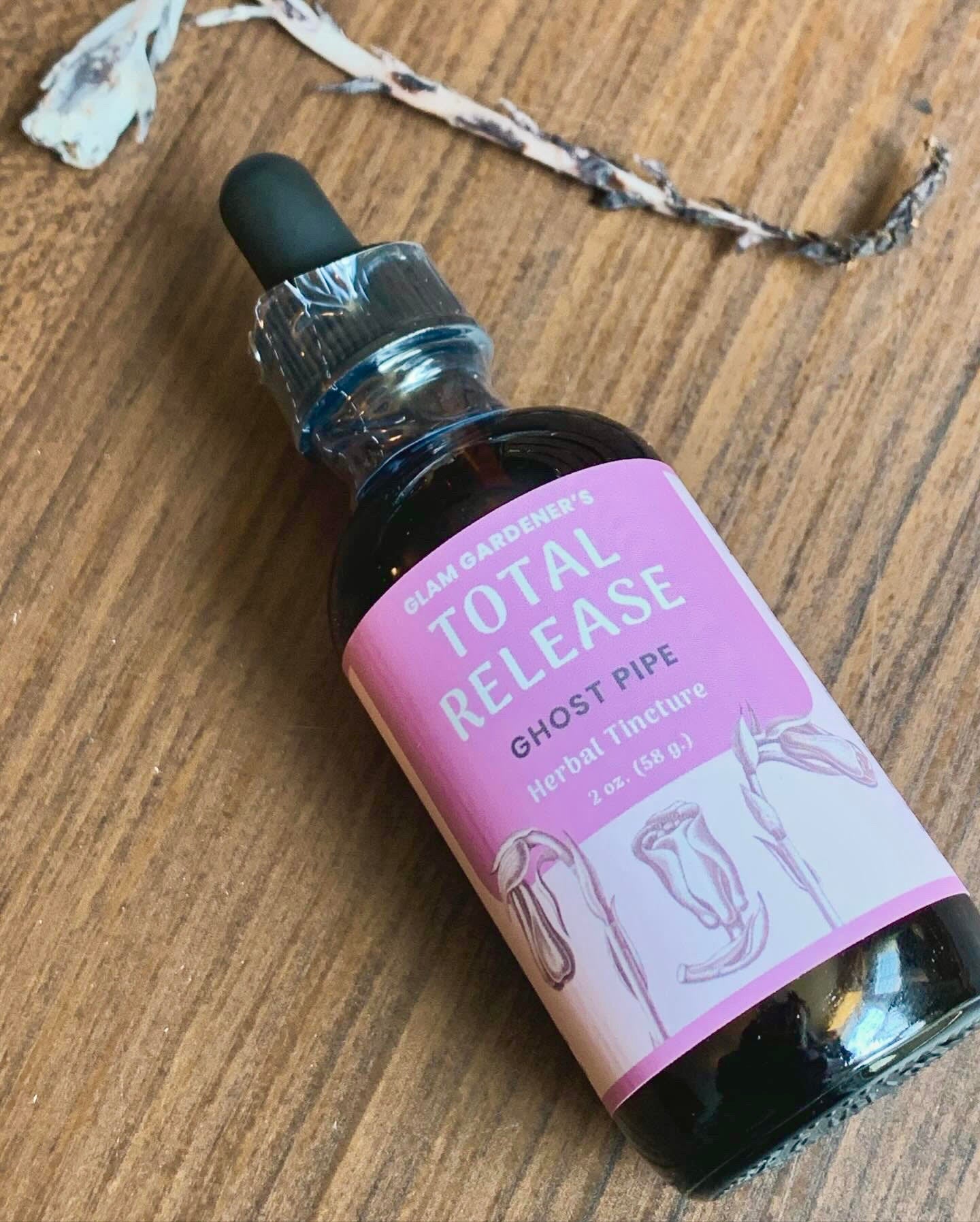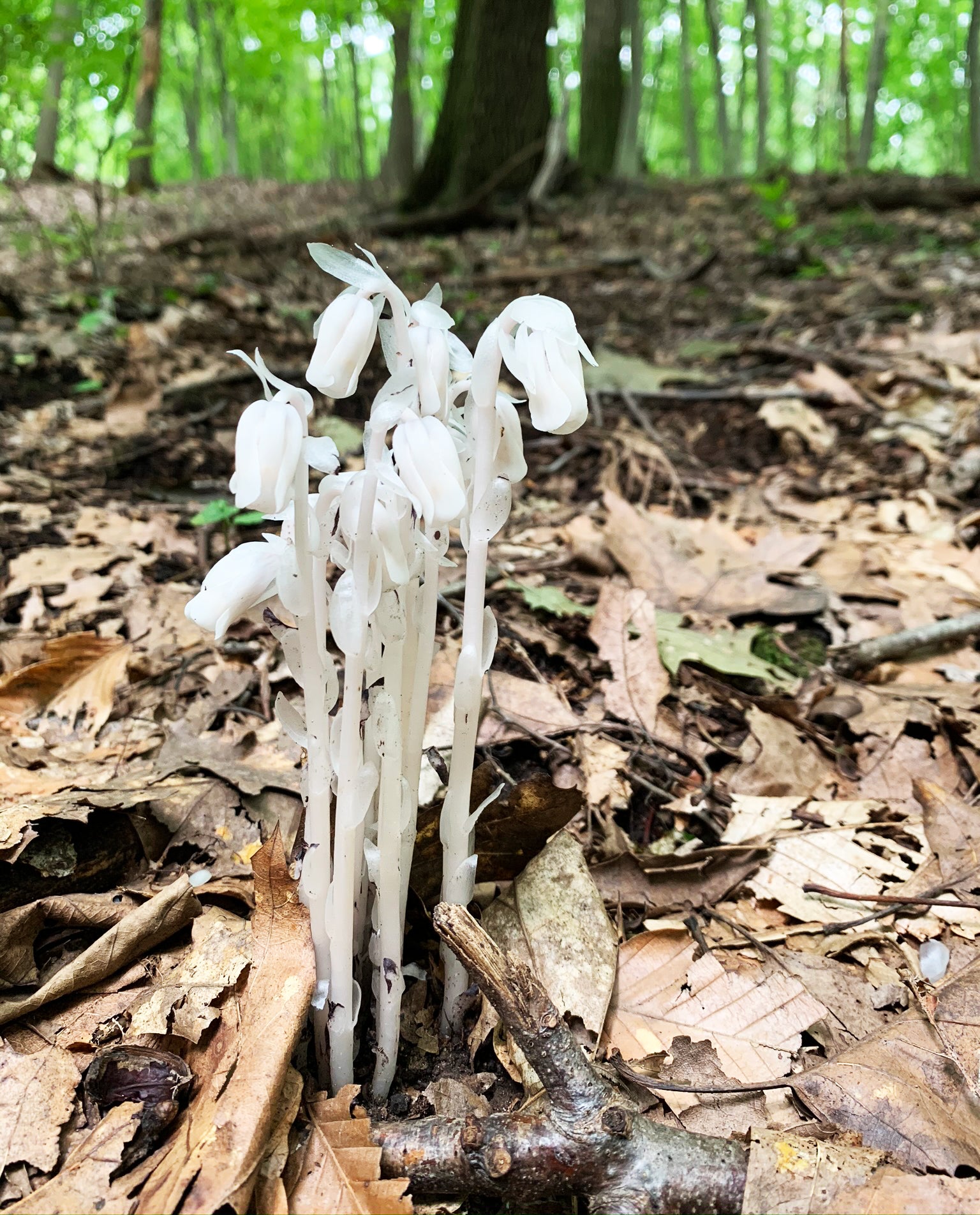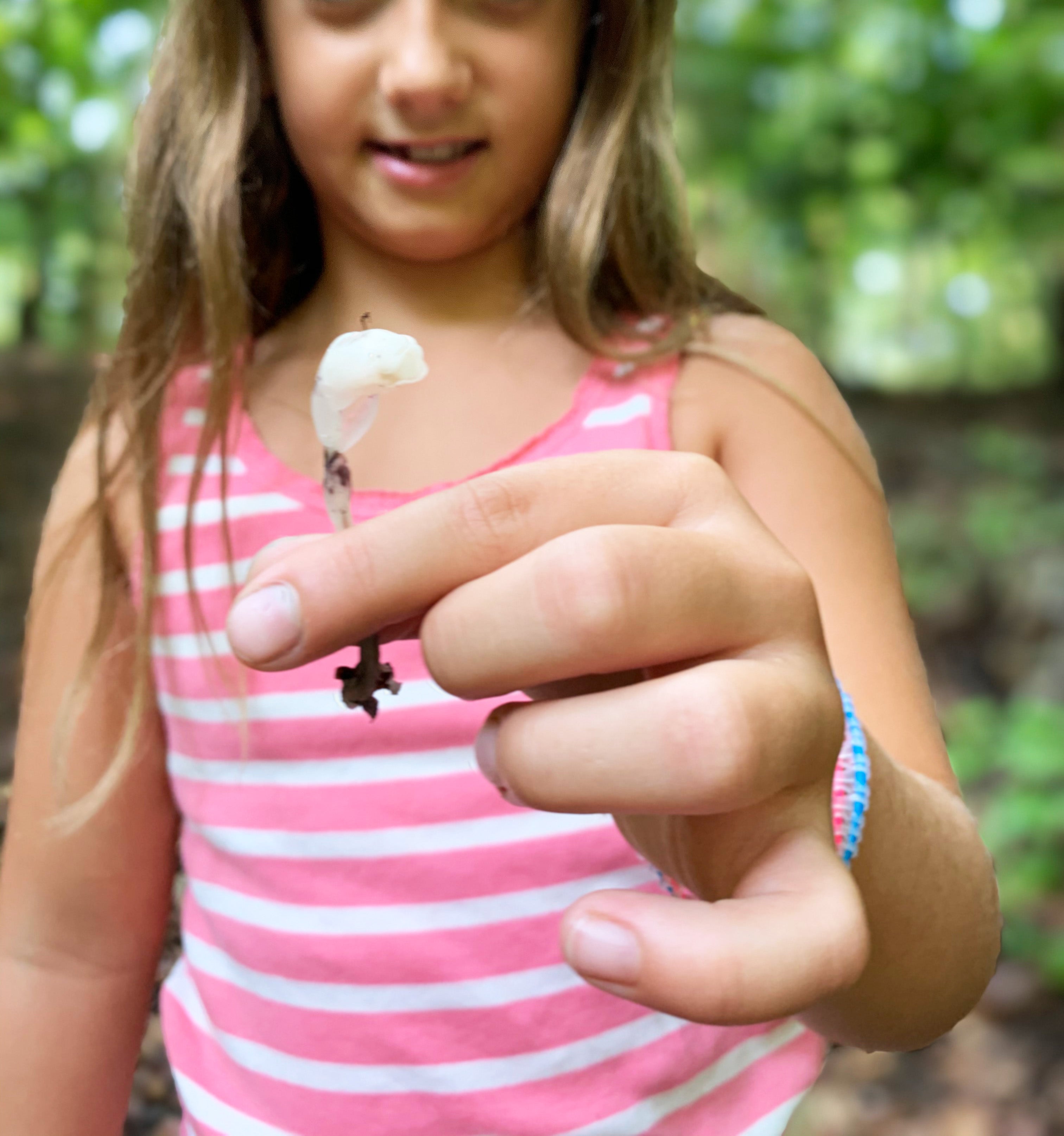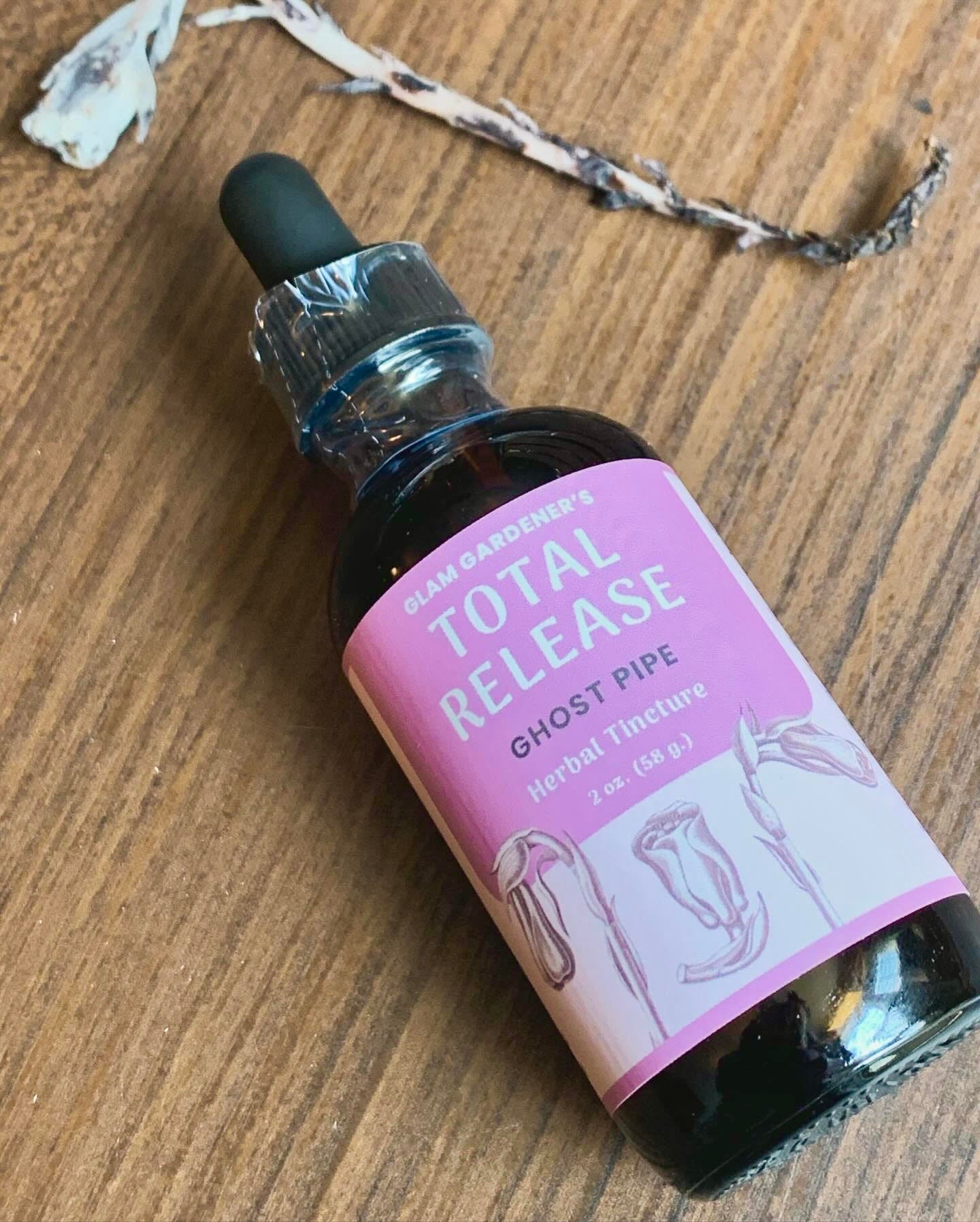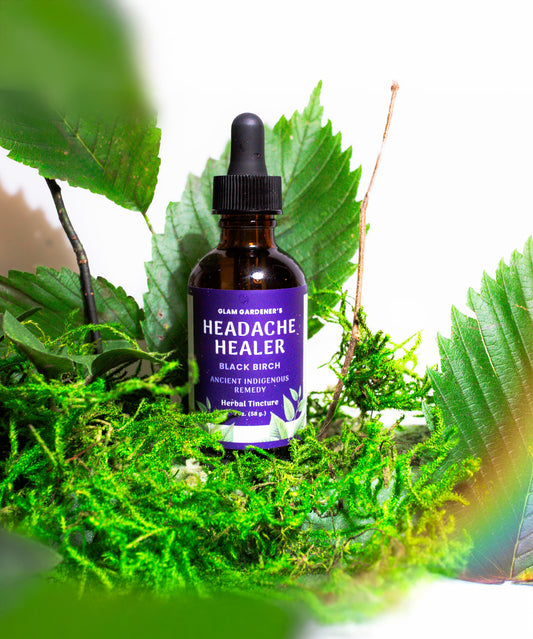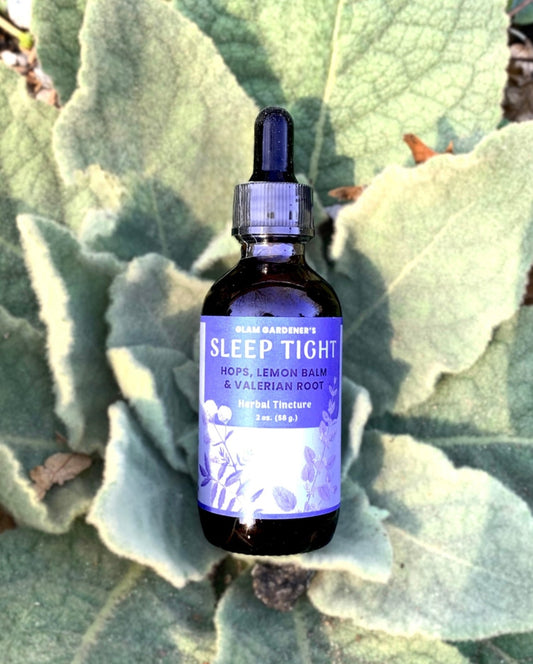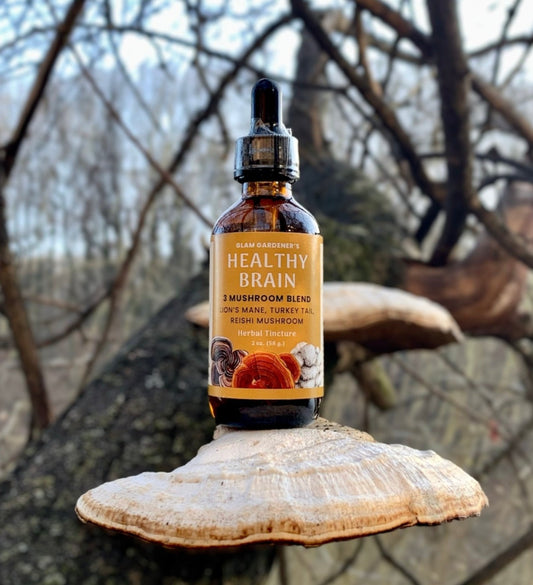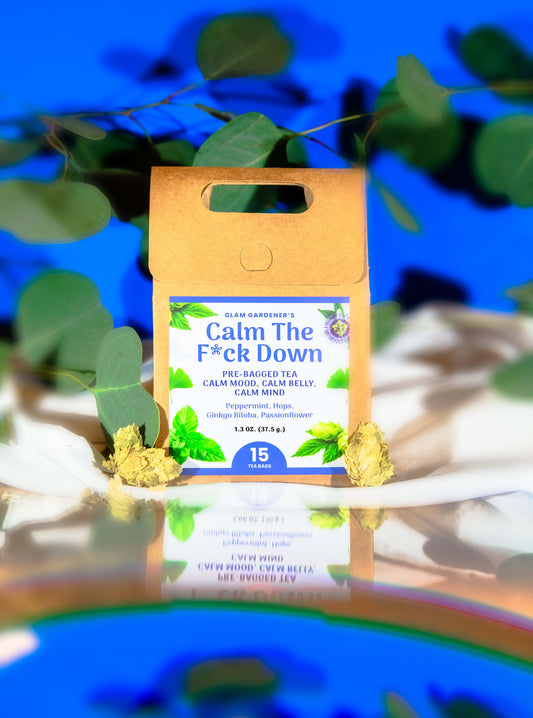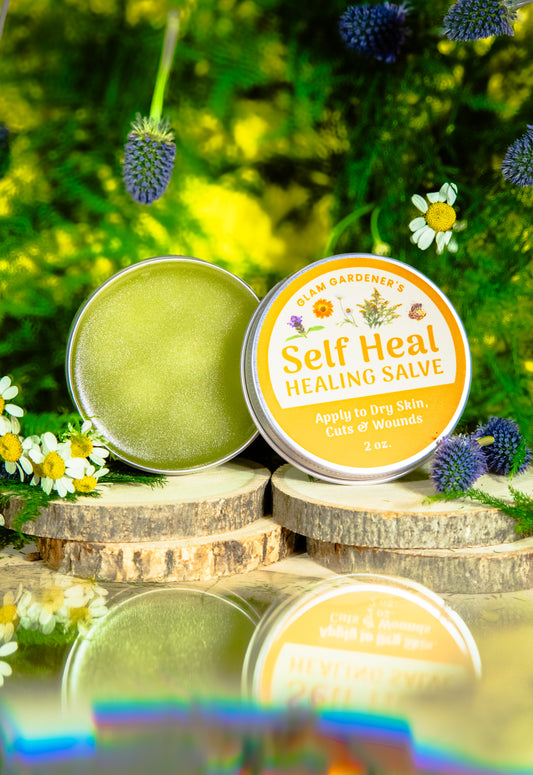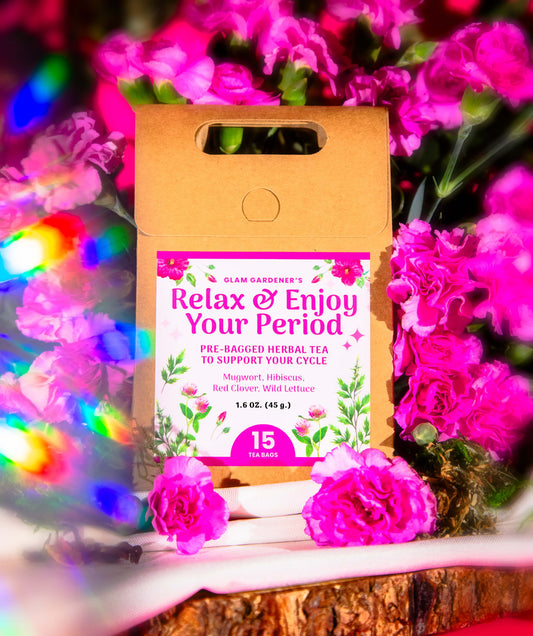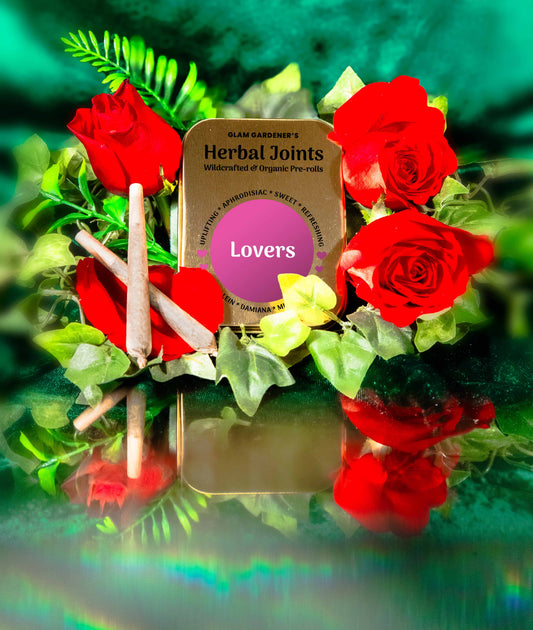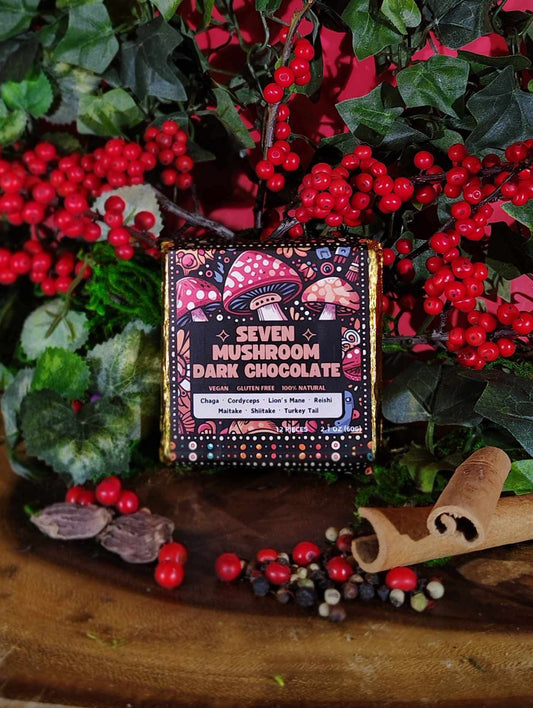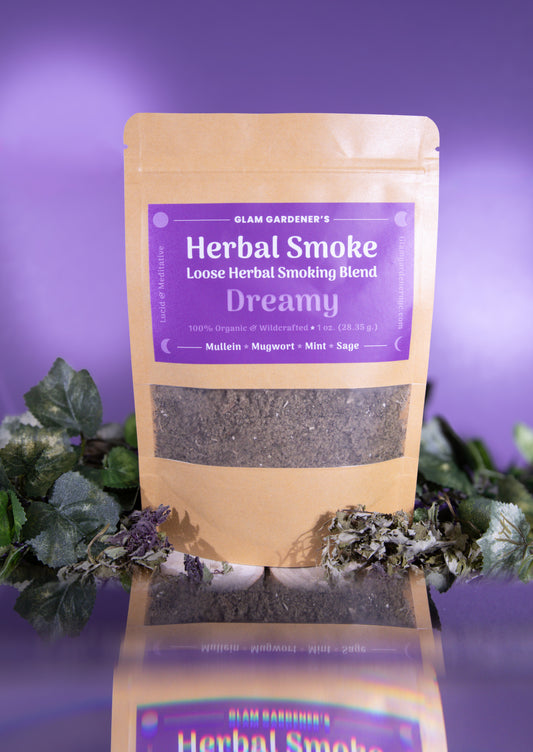WHAT IS GHOST PIPE?
A medicinal wild plant that offers natural pain relief, emotional support, and nervine benefits.
An article by forager, and herbal product maker Glam Gardener. We craft herbal tinctures with Ghost Pipe and many regionally harvested medicinal plants, offering remedies in-person at markets across New York & New Jersey as well as online.

Total Release: Ghost Pipe Herbal Tincture

Explore All Herbal Products
Teas, tinctures, smudge wraps, topical salves, and herbal joints. Herbal products by...
What is Ghost Pipe?
You really can't ask a forager about an incredibly medicinal, rare, wild, native plant that I love and expect me to keep it short and sweet.
Glam Gardener NYC offers a Ghost Pipe tincture, crafted with wild-harvested ghost pipe, organic vodka, and sustainably-sourced vegetable glycerin to sweeten it up for the folks that don't like their natural remedies with a little bit of *yuck* factor.
But seriously. Ghost pipe is a wild plant that foragers and herbalists are kind of obsessed with. Why? It's incredibly medicinal, as it offers natural pain relief, emotional support, and more. It supports the body as a nervine, analgesic, and sedative.
Nervine = supports the nervous system.
Analgesic = assists with pain relief.
Sedative = provides sleep support.
Ghost Pipe's scientific name is Monotropa Uniflora and its other nicknames include Ghost Plant, Indian Pipe, Corpse Plant, and more.
What are some of Ghost Pipe's Uses?
Can we take a second to admire that purple color of the ghost pipe tincture? It's quite magical, as this plant isn't even a little bit purple. It's purely white, looks more like a mushroom, and contains no chlorophyll, but more on that later.
Personally speaking, I found the most profound effects of ghost pipe to be its ability to help me feel grounded and centered. I first began ingesting this plant by drinking it as tea before bed. It nearly eliminated the chatter from my brain and subsided minor aching in my feet from being on them all day.
I named Glam Gardener NYC's Ghost Pipe tincture "Total Release," because that's truly what it offers. It offers us the opportunity to release woes, grief, worry, and the build up of tension and pain.
Before we get into the wide array of uses for ghost pipe—which are based on modern accounts + thousands of years of herbalism + cultural traditions—we've got to offer our disclaimer.
Oh, the infamous disclaimer. Listen up, folks!
Many of ghost pipe's health benefits are well documented in many herbal books, both old and new, and are not intended to diagnose, treat, cure, or prevent any disease. Furthermore, these statements have not been evaluated by the food and drug administration. When in doubt consult your healthcare provider or a clinically trained herbalist.No, but seriously. Ghost pipe can be very powerful for some, and it's wise to do your research about side effects and medical interactions before consuming. Some possible uses for incorporating this plant include:
Pain Relief
While some accounts report that ghost pipe provides serious pain relief, others report that it provides relief by distancing us from pain rather than deadening it. Sort of like taking the edge off.
Here's a quote from a fairly profound herbalist named David Winston, "you know it hurts, but simply don’t care.
Grief, irritability & overcoming overwhelming emotional stimuli like sensory overload
Nervines are plants that offer support for the nervous system, which can be frazzled in states of grief and emotional overwhelm. Many people ingest nervines for calming support. Some of which you'll find at your local herb shop: Skullcamp, Chamomile, Milky Oats, Catnip, Valerian, Hops and Blue Lotus.
Physical spasms, restlessness, and sleep support
Nervines are also known to support in relieving muscle tension and other forms of physical discomfort.
Potential support for calming down from unfavorable psychedelic experiences
This one is pretty profound and something that I personally cannot speak to. So I'm sharing a quote from an herbalist that documented and share their experience of ghost pipe in the American Herbalist's Guild. The American Herbalist's Guild is a non-profit founded in 1989 that represents the goals and voices of herbalists specializing in the medicinal use of plants.
"When I first started researching Ghost Pipe, I came across Ryan Drum’s account of using themedicine to help sedate a man who was having a psychotic episode that seemed to be eitherbrought on by or exacerbated by an intense drug experience.Based on this account, and on my experiences using Ghost Pipe for acute anxiety, I decided to try giving the medicine to the frightened and agitated psychonauts who wound up in my care.In almost every case, the effects were quick and dramatic. Within a few minutes of giving 1-31ml doses of the tincture of the aerial parts, pupil dilation and responses to external stimuliwould return to normal, and the person would begin to settle down. With 15-30 minutes theperson would fall asleep and wake up hours later, calm and coherent.In dozens of instance of treating fear and agitation brought on by entheogenic drugs, I have only seen four cases where Ghost Pipe did not successfully calm and sedate the person..."
Foraging ghost pipe: What does it look like and where does it grow?
Ghost Pipe is often mistaken for a mushroom because it's white, has that mushroom-y tecture, for lack of a better word, and doesn't contain chlorophyll like most of the plants we're familiar with.
Up close, it looks like a tiny little rose. It's quite remarkable in real life. It feels very special to forage, because it hides from you. It's tiny. Never growing beyond 6 inches.
It likes to pop out after a lot of rain in deep and shaded forests, like many forests we have in New York, New Jersey, and Pennsylvania. But you can find ghost pipe in forests across much of the United States.
It's very special to find as it likes to hide underneath fallen leaves. If you found it, it probably means that you've ventured off the trail to do some mushroom hunting and you're presently observing your surroundings.
This plant is truly a wild plant. You can't really just plant it, because it grows symbiotically with the mycelium (mushroom roots) of particular mushroom species, which need particular trees to grow in the first place.
Thus, it's kind of rare. Although in recent years, I've noticed that the ghost pipe harvests have been abundant.
I urge everyone to get outdoors and forage for themselves. It's one of the best gifts I've discovered in this life. But ghost pipe is a rare native plant, so it's really important to harvest ghost pipe ethically and to leave more behind than you find.
Tips for ethically and respectfully harvesting Ghost Pipe
Pinch the steam leaving the roots intact so we do not destroy the plant’s ability to grow next year. Ghost pipes like to grow in clusters of 2-20. Take no more than half of each cluster. If there are less than 3 in a cluster, leave it alone and find one nearby. There are likely clusters nearby if you've only found one.
Storytime: Foraging ghost pipe with kids
If you don't know, Glam Gardener teaches both kids and adults about foraging in the New York & New Jersey area.
So, one hot and rainy NYC summer, I taught foraging all season at an outdoor camp in Staten Island, NYC.
We hiked daily, discussed plant identification, and ate wild food.
I'll never forget leading this foraging excursion toward the end of the camp season, and these awesome little ones saying, "Ms. Aly, I found the rare plant you taught us about!"
My heart exploded! These little girls were only 8 years old, and they learned how to differentiate this unique plant. They understood that it was rare and practiced the ethical harvesting protocol that I taught them.
If they can do it, so can you. You got this.
This plant was used by many native tribes for its medicinal purposes
For example, it's reported that Cherokee tribes used the pulverized root as an anticonvulsive, while the Mohegans used an infusion of the root or leaves as an analgesic. The Cree chewed the flower as a remedy for toothache.
I've read accounts of ghost pipe being used ceremonially as well. One account shared the use of ghost pipe being used in a ceremony that coincided with the menstrual cycle.
A little reflection before you go
.In my personal experience, ghost pipe feels ceremonial. It is a plant that eases us into presence and release. I was quite frightened when I first tried it, as I don't love the feeling of intensely mind-altering plants.
But there was nothing to be scared of. This plant has a non-psychoactive effect on me, which is quite remarkable considering how powerful it is.
It truly does have a way ofshedding the layersthat we tend to accumulate living a high stress and fast paced life. It deserves its glory, it deserves our honor and respect.
Foraging ghost pipe is a meditative experience in and of itself. You must venture off trail to find it. If you're not present, it'll mock you as you walk right past it!
It's an honor to have gotten familiar with this plant. I'm glad to be able to share a little bit of ghost pipe with you, either through this information, or via our herbal tincture.
Glam Gardener NYC
Total Release: Ghost Pipe Herbal Tincture
Share




Explore all Glam Gardener tinctures
-

BREATHE EASY | Mullein & Stinging Nettle herbal tincture with organic & wildcrafted ingredients
Regular price $20.00 USDRegular priceUnit price / per$25.00 USDSale price $20.00 USDSale -
Headache Healer: Black Birch Herbal Tincture
Regular price $20.00 USDRegular priceUnit price / per$25.00 USDSale price $20.00 USDSale -
Sleep Tight: Hops, Valerian Root, and Lemon balm Herbal Tincture
Regular price $20.00 USDRegular priceUnit price / per$25.00 USDSale price $20.00 USDSale -
Healthy Brain: Lion's mane, Reishi and Turkey Tail Mushroom Herbal Tincture
Regular price $25.00 USDRegular priceUnit price / per
Explore all Glam Gardener Herbal Products
-
CALM THE F*CK DOWN | Herbal tea for a calm mood, calm belly, and calm mind • pre-bagged
Regular price From $17.00 USDRegular priceUnit price / per$51.00 USDSale price From $17.00 USDSale -
SELF HEAL • Salve & healing lotion for cuts, burns, and wounds with Self Heal, Calendula, Goldenrod, and Chamomile
Regular price From $20.00 USDRegular priceUnit price / per$40.00 USDSale price From $20.00 USDSale -
IMMUNITEA • Pre-bagged herbal tea for a strong immune system • 100% wildcrafted & organic
Regular price From $17.00 USDRegular priceUnit price / per$51.00 USDSale price From $17.00 USDSale -
FIRE CIDER • Superfood infused daily wellness tonic with local honey, wild plants, and organic ingredients
Regular price From $25.00 USDRegular priceUnit price / per$75.00 USDSale price From $25.00 USDSale -
Relax & Enjoy Your Period bagged herbal tea with mugwort, red clover, wild lettuce, and hibiscus for a pleasant period and PMS relief
Regular price From $17.00 USDRegular priceUnit price / per$51.00 USDSale price From $17.00 USDSale -
LOVERS • 5-pack of Herbal pre-rolls for smoking with wildcrafted and organic mullein, damiana, mint, and sage designed for lovers, aphrodisiac, and uplifting
Regular price From $20.00 USDRegular priceUnit price / per$60.00 USDSale price From $20.00 USDSale -
Stoffo’s 7 Mushroom Dark Chocolate Bar with Chaga, Reishi, Lion’s Mane, Turkey Tail, Cordyceps, Shiitake & Maitake
Regular price $8.00 USDRegular priceUnit price / per -
DREAMY | Loose herbal smoking blend • Organic & wildcrafted mullein, mugwort, mint, and sage for calming, sweet dreams, and relaxation
Regular price From $23.00 USDRegular priceUnit price / per$25.00 USDSale price From $23.00 USDSale
Join the Glam Fam
Join our email list for exclusive offers and the latest news.

